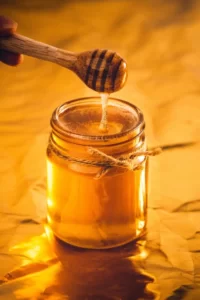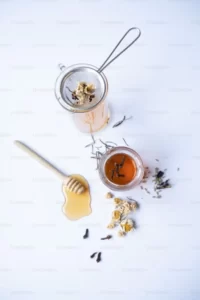Table of Contents
Manuka Honey: Understanding the Difference Between Monofloral and Multifloral Varieties
Introduction
When it comes to the world of honey, manuka honey stands out as an exceptional variety with a wide range of health benefits. Made from the nectar of the Leptospermum scoparium plant in New Zealand, manuka honey has gained popularity for its healing properties that extend to skincare and digestive health. However, due to the limited number of these plants, manuka honey production is restricted each year, making it a sought-after and valuable product.
Understanding the Terminology: Raw, Pasteurized, and Manuka Honey
Before delving into the differences between monofloral and multifloral manuka honey, it’s essential to understand the associated terms and labels commonly found on manuka honey products. In the United States, consumers are familiar with raw honey and pasteurized varieties, such as clover or orange blossom honey. However, the distinction becomes slightly more confusing when it comes to manuka honey.
Firstly, it’s important to note that “manuka” refers to the plant species and the honey derived from it, while “raw” and “pasteurized” indicate the processing methods. Just like any other type of honey, manuka honey can be either raw or pasteurized. However, discussions often revolve around the benefits of consuming raw manuka honey, which is favored by individuals who prefer honey in its most natural form. Nevertheless, the pasteurization process does not significantly alter the health effects of manuka honey in general.
The Price Factor: Manuka Honey vs. Standard Clover Honey
Manuka honey, whether raw or pasteurized, tends to be more expensive compared to standard varieties like clover honey. While some supermarket brands offer manuka honey at relatively affordable prices, online merchants often charge premium prices for even small jars of this golden elixir. Given the substantial investment required, it is crucial to ensure that the manuka honey you purchase is authentic and pure.
When examining labels, keep an eye out for any indications of blended honeys. Some products may be labeled as “monofloral,” which means that the honey primarily comes from one specific flower species. On the other hand, “multifloral” manuka honey contains predominantly manuka flower nectar, but it may also incorporate nectar from other flower species. Interestingly, multifloral manuka honey generally contains lower levels of methylglyoxal (MGO), the compound responsible for the various health benefits associated with manuka honey.
The Importance of MGO: Understanding the Antibacterial Properties of Manuka Honey
Methylglyoxal, or MGO, is a naturally occurring compound found in varying levels within the nectar of manuka plants. Consequently, these variations are transferred to the honey produced from their nectar. Many reputable manuka honey brands specify an MGO number on their labels, with a higher number indicating a greater concentration of MGO and stronger antibacterial properties.
Typically, monofloral manuka honey will display an MGO number with three digits, while multifloral manuka honey might have an MGO number with only two digits. The MGO number serves as a crucial consideration when purchasing manuka honey, especially for those seeking its renowned antibacterial benefits. It is advisable to select honey with the highest MGO number available to ensure a potent and effective product.
Making an Informed Purchase: Factors to Consider
When it comes to buying manuka honey, there are several key factors to consider in order to make an informed choice that aligns with your preferences and requirements. Firstly, determine whether you prefer raw or pasteurized honey. Next, consider the mono- or multifloral status of the honey, as this can influence the overall properties and benefits. Finally, pay attention to the MGO number, especially if you are seeking the antibacterial effects for which manuka honey is renowned.
By understanding these factors and conducting thorough research, you can confidently navigate the market and find a high-quality manuka honey product that suits your needs.
For more information and to explore a range of manuka honey options, we recommend reaching out to a reputable manuka honey supplier such as https://aboutmanukahoney.com.
13 July 2022 Categories: Manuka Honey, Health, Honey Production



